Functional testing for the HP-4396B | |
|
Any boat anchor finding its way into the lab is going to have to be the subject of some inspection. After the quick sanity check it's time to verify that the analyzer is performing correctly. I won't go into all the 'parameters adjustments' (aka calibration) but any test that can be performed without changing the calibration should probably be done. So let's get to it... First and foremost is the power supply: if that one is toast things are not going to go as planned later on. We know it's at least somewhat OK because the system boots without errors, but there is a well known (?) issue with some caps in the PSU so let's have a little look. I will refer the service manual extensively below: these tests are not ideas I pull from thin air! :) The first thing to check is apparently the "Shutdown LED" on board A50 (page 5.3). It's only glowing a pale green but I assume that's OK (assuming is bad, I know, but the future will prove me right, hopefully!). Then we can check the 8 LEDs on the A2 board (page 5.5). 7 should be ON and one should be OFF. So far so good: 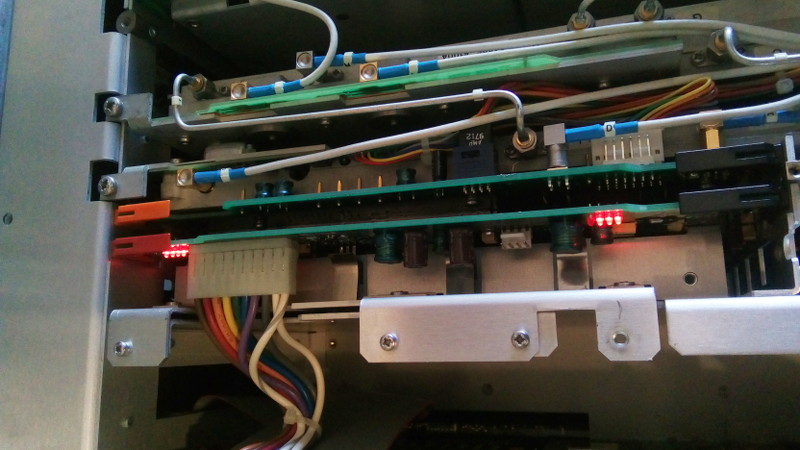 7 out of 8 leds are ON: purrfect! The manual then recommends running test #4 (page 5.6). The test succeeds so still no issues. Noice. After that we can start to actually measure all the rails which the service manual calls "post regulator tests" (page 5.16). This is where things get more involved. The A2 board must be pulled out, which requires disconnecting a very hard to pull power cable. One out the board is reconnected and can be secured into place upside down, using its own bracket, neat! A generator is also required for this step. The manual shows a 8112A, and since I have one on my bench it'd be rude not to use it. Watch out: the generator output has an impedance of 50ohm but the PSU circuit it's plugged in is high-Z, so check the signal amplitude with a scope beforehand! The manual says 0-7.8V square wave, which I achieved with a 0-3.8V setting on the generator. The voltages I measured were 15.1, 4.97, -5.08, -14.02, 5.3, 9.6, 14.9, -11.9, 22.2. All good! 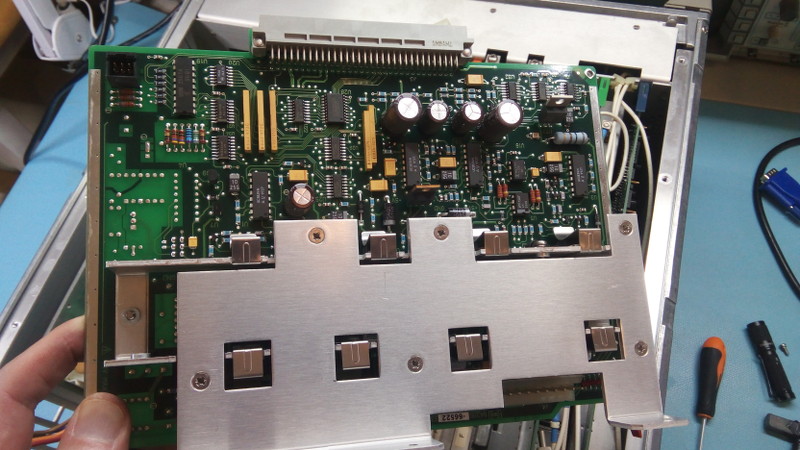 The A2 board is out! 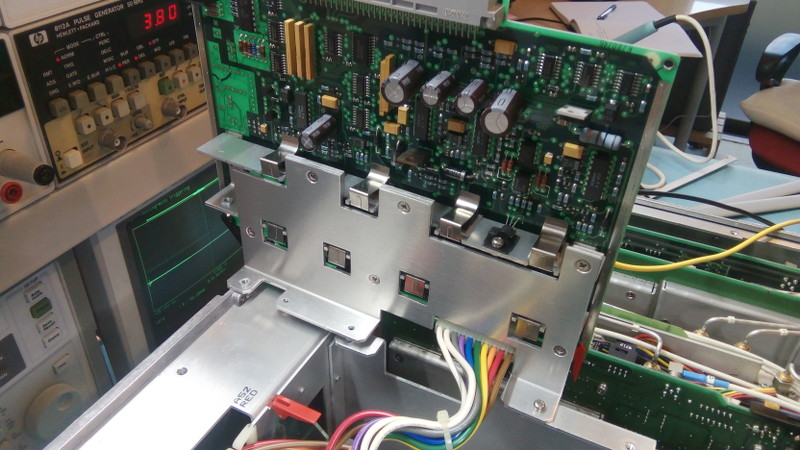 The A2 board is secured with its own bracket and its own screw, just flipped 180 degrees. This is not in the manual, but fricking practical nonetheless!  The 8112A pulse generator connected to simulate fan spinning. Now we can run all the internal tests, which to be honest we could have done earlier too. But hey. These tests are "test #0", which actually runs all the internal tests shown on page 6.9. You can find a description of each test on pages 10.7 and later. All tests are OK for the analyzer, this starts to look like a good score, even with the poor display! Speaking of which, the display tests can be executed too. These are #48 to #52. Nothing fancy, just plain black, white, red, green and blue screens. No pixel issues but a good reminder of how bad the display is: poor contrast, weak colors, bad corners (delamination of the polarizer?), etc... Clearly the next step is going to be replacing this sad display.  Test zero (internal tests) is OK! At this point we can upgrade the firmware to 1.16, because why not? The procedure is simple, see page 6.4. While we're at it we can check that the analyzer shows up when we scan the HP-IB bus, which it does (*IDN? and OPT requests work fine at least) Saving a screenshot to disk also works, but getting it through GPIB will require some coding because it appears to handle prints differently from my other devices.  First screenshot, saved on disk. The firmware update and screenshot saving are one way to test the FDD. A few tests are not included in the "test zero" internal test set: the RAM test (#2), the keyboard test (#17), the FDD test (#18), and the graphic test (#3). All are OK, but how they indicate their ok-ness differs. For example, RAM and graphics test make an auto-reboot when they're done. Here's the shots from those tests. Note that these are ugly pics instead of proper HP-IB screenshots because the test results do not appear on the images captured through HP-IB. 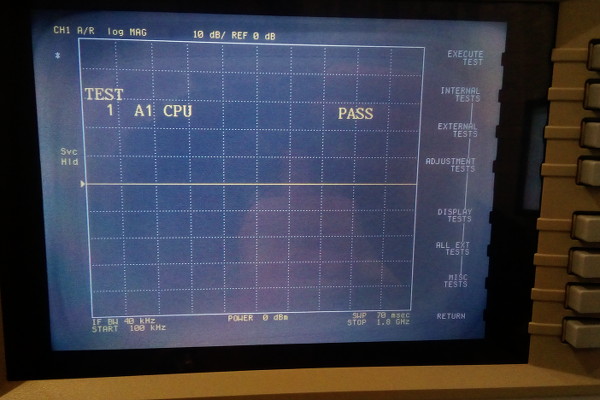 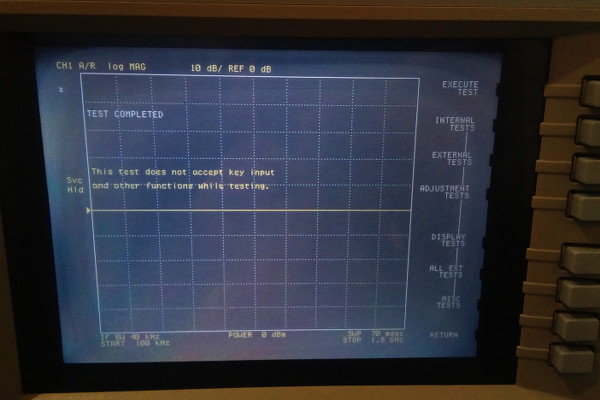 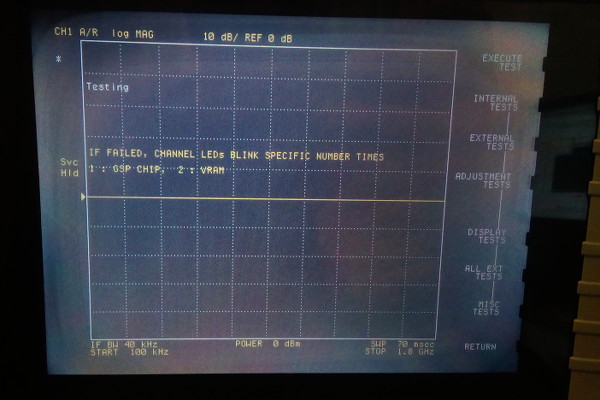 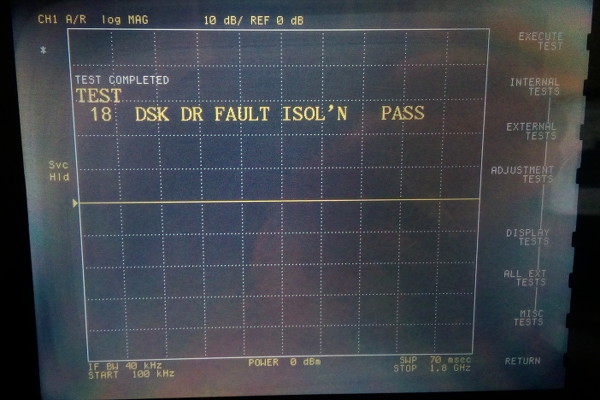 Test 1, 2, 17 and 18 are all OK. And now we enter the realm of serious testing: the "operator's checks" (page 3.5). These tests require some external connections. There's five tests in total. The first and last ones are easy as they don't require special hardware. One test requires terminators and two others need a lovely power splitter (11667A). This puppy costs $2000 from Keysight so I've ordered a much cheaper part from Ali Express. Ooops. It's an opportunity to learn that there's multiple types of splitters. What we want is a purely resistive one (it should work from DC to 2GHz). Then we need to select the proper type between actaul splitters (with two resistors) and dividers (with 3 resistors). The one I bought is the wrong type for this test which requires a splitter, but converting a divider to a splitter is just a matter of replacing resistors. Check this Hewlett-Packard application note to discover more about splitters and dividers. The first test (#53) is the simplest but... fails! Gaaa! I used N-to-BNC converters and a good BNC cable (50cm, RG58, Digikey)), WTF? Luckily trying again with a cheaper and shorter (15cm) RG316 from Amazon solves the problem. First RF connection I make and already a good lesson: connectors and cables are important! (I knew that but it's nice to see it scare you in real life). 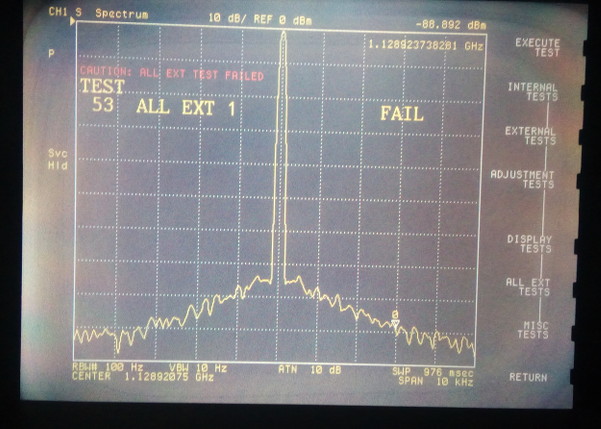 Test #53 fails when using a supposedly good RG58 cable from Digikey. 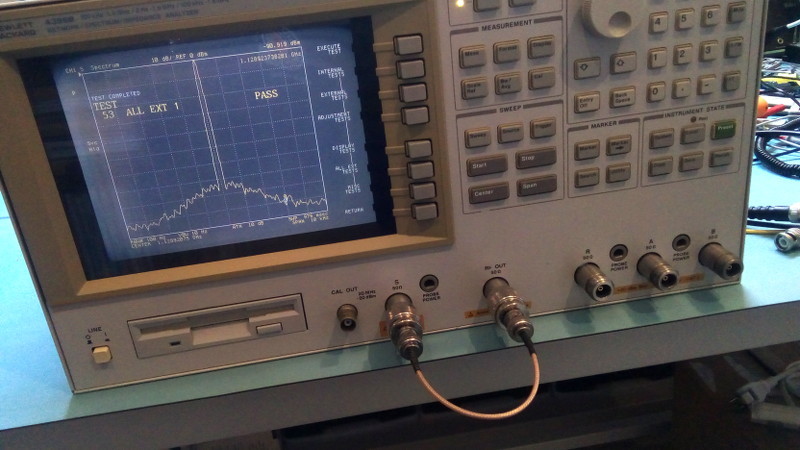 ... but works fine with a cheapo (but much shorter) RG316 from Amazon. Go figure. The second operator test I make is the fifth one (#57), which uses the calibration signal and the spectrum input. All good there.  Test #57 is successful on first try, whew. Then the power splitter is needed, and we'll use the cheap one I ordered. I modified it because 1) it's a "divider" so we must remove one resistor and 2) they put three 51 ohm resistors instead of three 16.7 ohm resistors! So all resistors have to go, and I replaced two of them by 49.9 ohm (close to 50 ohm). The third resistor (the input one) is just a solder blob since we need a power splitter and not a power divider. Here's the little thing in action after modification: 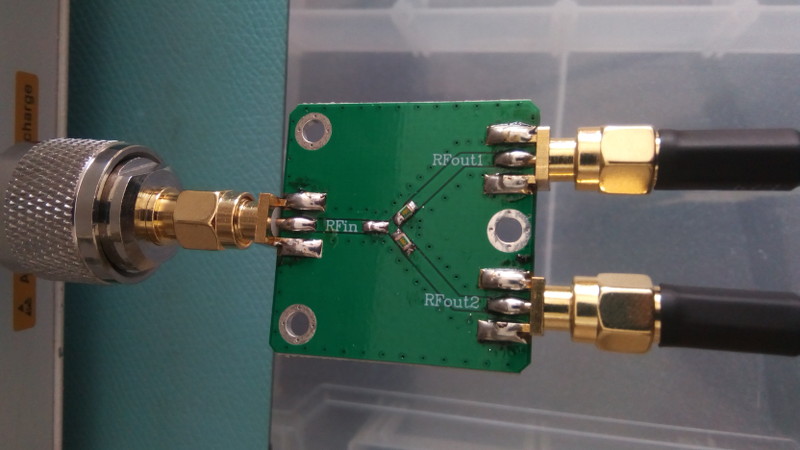 Cheap power splitter, good from X to Y Hz (for X and Y unknown) Now that we have the tools we can run tests #55 and #56, and both are OK despite the less-than-stellar splitter. Noice! 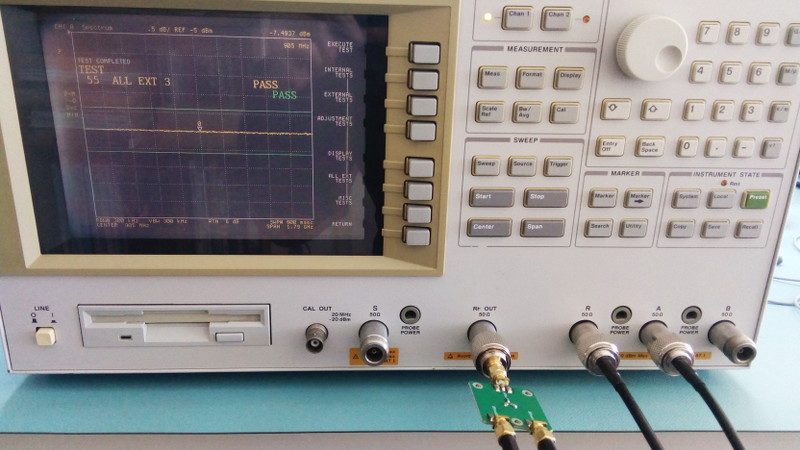  Tests 55 and 56 are both good. The final test is test #54 for which I had to get a couple of 50 ohm SMA terminators. The test is somewhat long and a little scary: most sub-parts of this test start with FAIL because it uses the previous trace as starting point and of course that previous trace does not necessarily fit the current sub-test. But in the end all is good: 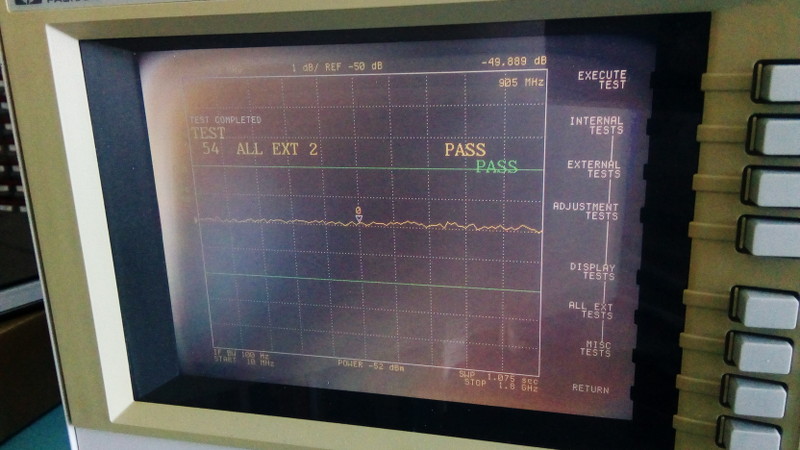 Our last operator test #54 is good. This ends the basic testing of the Hewlett-Packard 4396B Spectrum / Network / Impedance analyzer. A little extra check is to verify that the source frequency is accurate. For this I use my 10MHz house reference and get an accurate frequency estimation from my modulation domain analyzer (HP-53310A). Yes any excuse to get a nice screenshot should not be missed! Less than 50uHz at 1.8GHz is an error under 3e-14, impressive but expected if every device is using the same reference in the lab. Still it does mean the oscillator is gut gut supagut. 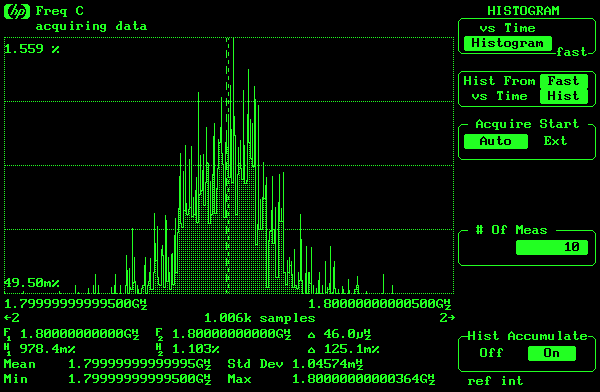 50uHz at 1.8GHz should be enough for everybody... Want screenshots over HPIB? Check out my script! More updates when the goodies come in and I can continue testing... | |
| © 2024 Damien Douxchamps. All rights reserved. | |

